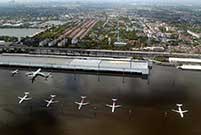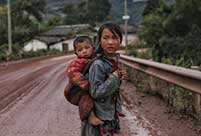


The latest statistics show that Zhejiang, an eastern coastal province of China, has achieved a remarkable milestone in poverty alleviation. All residents of Zhejiang now have an annual income above the provincial poverty line of 4,600 yuan ($708.44 USD), making it the first province in the country to achieve its poverty reduction target.
As a comparatively rich province, Zhejiang has faced its share of development imbalance. Compared to the rest of the province, the southwest part is relatively poor.
Keenly aware of the importance of infrastructure in poverty reduction, Zhejiang’s provincial government invested about 100 billion yuan ($15.4 billion) each year for over ten years in roads, internet and other facilities.
Meanwhile, the province also pursued mutually beneficial commercial development by taking advantage of the capital, technology and talents in its coastal areas, coupled with the resources, labor and biology of the southwest region.
Besides financial aid, the government also made sure that every household below the poverty line was properly documented and attended to by a designated official. A mechanism was also put into place to regularly report progress to the public.
Lishui, a city in the southwest area of Zhejiang, is one of the beneficiaries of these anti-poverty measures. The increase of farmers' net per capita income has ranked number one in the province for four consecutive years.
The current poverty line of China is 2,300 yuan ($355) per year.
 Are these the world’s scariest landing strips?
Are these the world’s scariest landing strips? In pics: Left behind children in China
In pics: Left behind children in China Eight modern day engineering marvels of China
Eight modern day engineering marvels of China Chinese beauty with sexiest bottom
Chinese beauty with sexiest bottom Charming female bodybuilders of Chengdu University
Charming female bodybuilders of Chengdu University Polish sports stars strip off for risqué calendar
Polish sports stars strip off for risqué calendar Spectacular aerial photos of the Three Gorges
Spectacular aerial photos of the Three Gorges Contestants of Mrs. Globe pose for photo in Shenzhen
Contestants of Mrs. Globe pose for photo in Shenzhen
 Bikini models attend hot pot banquet in Hefei
Bikini models attend hot pot banquet in Hefei Top 20 hottest women in the world in 2014
Top 20 hottest women in the world in 2014 Top 10 hardest languages to learn
Top 10 hardest languages to learn 10 Chinese female stars with most beautiful faces
10 Chinese female stars with most beautiful faces China’s Top 10 Unique Bridges, Highways and Roads
China’s Top 10 Unique Bridges, Highways and Roads Laowai Internet sensations
Laowai Internet sensations Comfort women deal will not aid Tokyo
Comfort women deal will not aid Tokyo Parents demand air purifiers be installed in schools, not all successful
Parents demand air purifiers be installed in schools, not all successful A sign of disaffection, rural worship of Chairman Mao is treated with caution
A sign of disaffection, rural worship of Chairman Mao is treated with cautionDay|Week